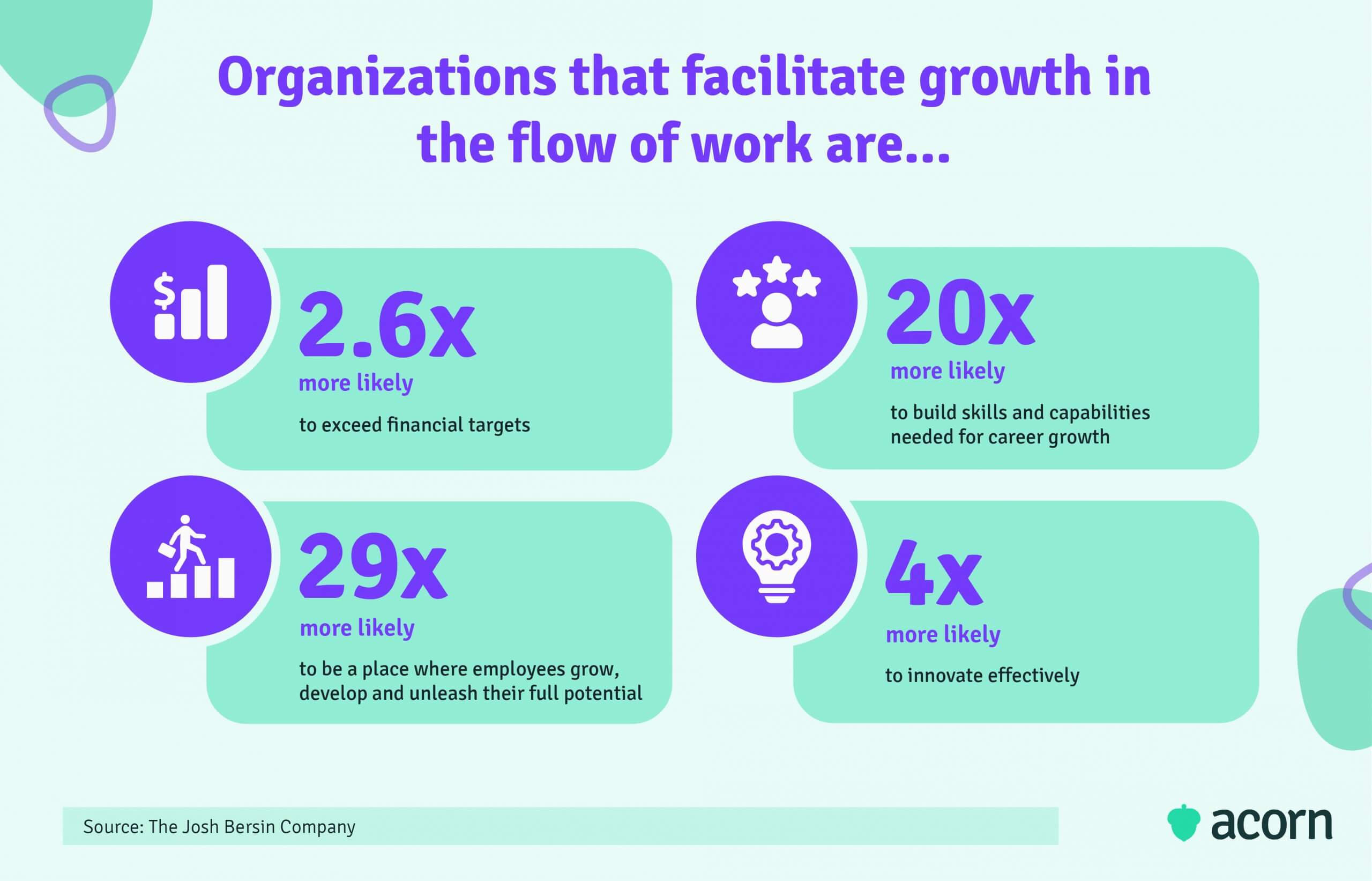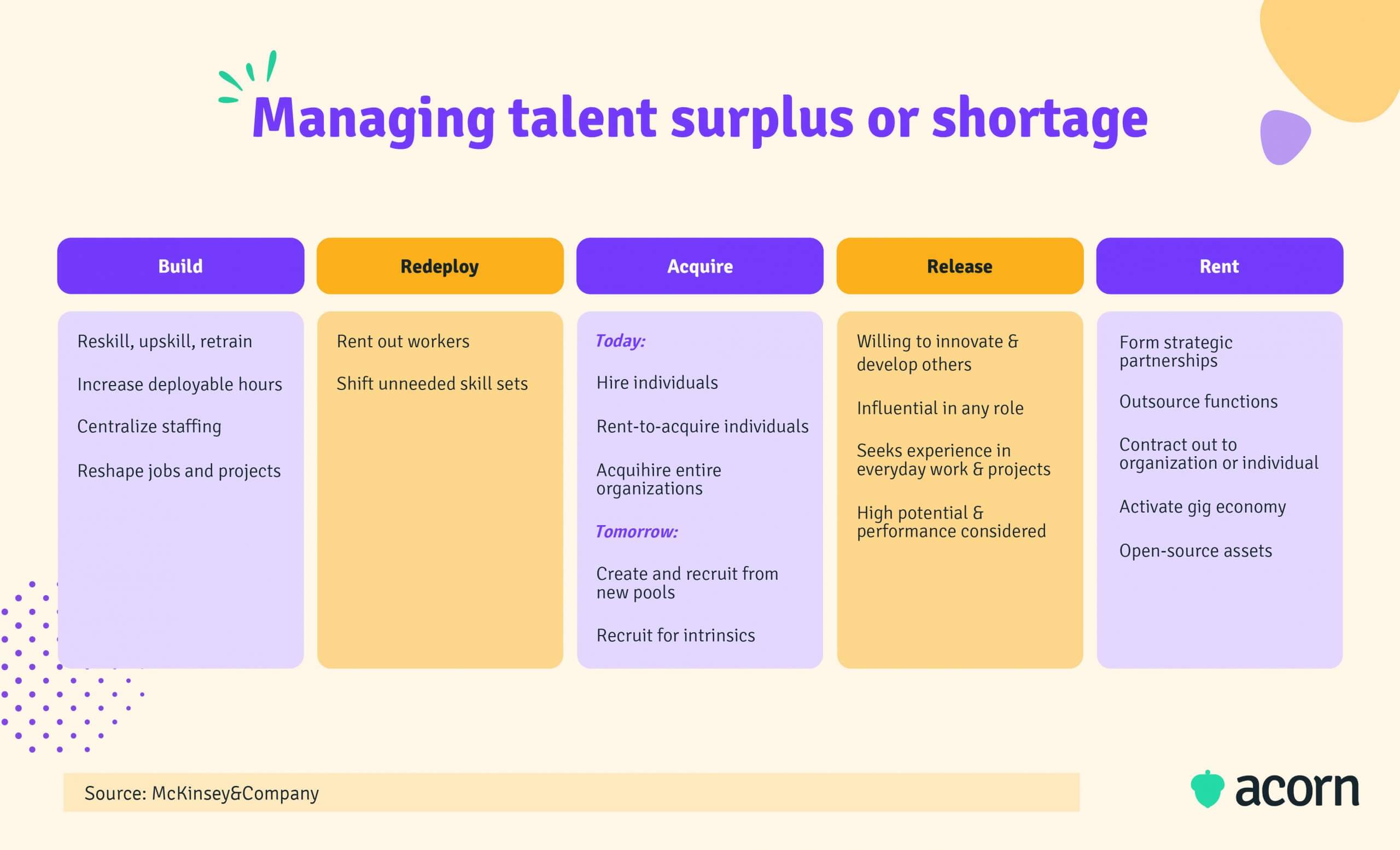The Importance of Succession Management for Future Business Performance
Reading Time:

Lead the pack with the latest in strategic L&D every month— straight to your inbox.
SubscribeSuccession management focuses on identifying organisation-wide talent gaps and preparing employees for critical roles into the future.
Leadership talent is rare. Leaving succession to chance is a risky move based off this statement alone, but all the more worrisome when you consider organisations get it wrong 82% of the time. (Ouch.)
Implementing a robust succession planning process complete with safeguards and contingencies—aka, succession management—is not just about de-risking talent decisions. It’s the heart of ensuring future organisational success.
We deep dive into creating a succession management model and how to make the business case for it in this article.
What is succession management?
Succession management is a systematic approach to identifying, selecting and developing an organisation-wide talent pipeline. The aim is to proactively de-risk the workforce through continual gap analyses and development.
Succession management vs succession planning
Succession planning is the process of identifying and developing a talent bench for a specific position or positions. Succession management is a more birds-eye view that focuses on building long-term talent benches and leadership maps for the organisation at large.
The succession planning process can also be managed or informed by the outgoing leader, but succession management generally falls under the umbrella of HR.
Why is succession management important?
Business conditions directly reflect economic happenings. As the external environment becomes challenging, so does the internal, making it hard to survive (let alone thrive) in volatile conditions.
Lacking a sufficient talent bench, pipeline or pool then has significant business risks.
- There is no endgame for performance management or development. That means no EVP for employees, and no incentive to perform better. (And, more than ever, employees leave organisations because training is neither relevant or geared for growth.)
- KPIs can be tied to job roles, sure, but you may not be able to accurately assess proficiency or competency without understanding your organisation’s actual talent needs.
- Sudden vacancies can have financial ramifications beyond immediate control. The majority of unfilled jobs in Australia, as an example, are vacant for more than a month.
- You’re at the whim of the labour market and its trends, including supply and quality of local talent.
That’s not to mention the insidious, day-to-day effects. Poor handover processes, lack of or ill-fit temporary placements, and neglecting unidentified future leaders will all continue to erode organisational culture.
On the other hand, succession management:
- Creates a readily available pool of talent for critical roles.
- Optimises spending during recruitment.
- Clearly defines growth opportunities for top talent (and all the associated benefits, like remuneration).
- Formalises talent management for HR, making data more easy to ascertain for ROI.
How to create a successful succession management model
Forewarning: The thing about succession management programs is that they generally need to start earlier or look further than you’d think.
Start with organisational strategy
If effective succession planning and management is about business continuity, then you need to start with the foundation everything else is built from. And that starts with an environmental scan.
Some thinking points here include:
- CEO vision
- Expansion of services, products or locations
- Changing customer base
- Talent supply and accessibility
- Competitors, specifically how they’re evolving and changing
- Marketplace and economic trends
- Current workforce structure.
Consider these through the lens of significant challenges in the next five years. For example: If the business is looking to expand their suite of products with new creations, keeping the same workforce structure in place may mean a lack of resources or capabilities to achieve that goal.
The point of this exercise is to both build a robust business case for a succession management plan and to ensure it actually addresses your organisation’s needs. A performance learning management system (PLMS) can help you here. It’s designed to enable companies to consistently align individual growth with business objectives.
Identify key positions
When you have the potential challenges of your future, consider the key roles that will influence business strategy.
Most succession plans focus on leadership roles. Likely there are lynchpin roles in your organisation; the CTO or customer support team managers, as examples.
Break them down by capabilities—this is how you can match talent to job tasks rather than titles. That way, if roles need to be reshaped or created, you can flexibly do that without losing momentum in the succession management process.
There’ll be stable capabilities that apply to leaders across different functions, such as strategic execution or building talent. But a sales director would likely have capabilities like prospect qualification, account acquisition and channel management in their job description. When you lay out those capabilities, you can see how a succession plan for the role could be easily designed or new, more niche roles created from it.
Assess your bench strength
Understanding the gap between your current state and desired future standing starts with knowing what you’re working with.
One way you can analyse bench strength is by getting leaders to list succession candidates in a few different time periods: Now, in the next two years, in the next two to five years, and then five years and beyond.
Leaders may not be able to offer potential successors for each period—which is a good thing. It shows where your gaps are, giving you the basis for creating leadership development programs. Include prompts for information like who:
- Is immediately capable of assuming a new role
- Could work in a role on an emergency, interim basis
- Is already working in an interim position
- Is working in another department but could transition with training.
Sorting by periods of time also ensures you’re investing in the right people at the right time as much as filling gaps. Consider a soon-to-be vacant role that only has potential interim successor. They’re more important to upskill than a role with a strong bench for the next two years.
Develop your talent pipeline
There are a few parts to this. You’ll want to formally identify:
- Succession candidates who are ready for critical roles (your talent pipeline).
- Other promising employees who are not quite ready to enter the pipeline (your talent pool).
Knowing both is crucial to a sustainable succession pipeline. That talent has to come from somewhere, even when just entering the pipeline. Having this as an automated process is equally important; utilise digitised internal skills marketplaces and capability frameworks for real-time and accurate talent assessments.
As the bridges for any uncovered succession gaps, consider leadership development in the context it will be applied. On the job training should be central to training future leaders. Research shows experience is the key driver of earnings growth for employees and talent growth for organisations.
That’s to say, remember the organisational strategy at the root of succession management. The Josh Bersin Company call it growth in the flow of work—an L&D approach that encapsulates developing leadership skills, fostering a learning culture, utilising technology and, you guessed it, empowering career growth.

Revisit and review
Inevitably, things slip through the cracks. Succession planning and management needs to be a systematic and data-driven process, which means robust evaluation of the outcomes of the process.
To make it more of an exact science, consider:
- Introducing broad performance metrics. That’s capabilities that are relevant to multiple job roles, families and departments. This checks the general strength of your foundations and talent.
- Equally, nuanced capability frameworks for success. Sales, project management, marketing, leadership—you name it, but it provides a clear definition of impactful performance.
- How you identify a potential successor. Does bias emerge if they’re chosen by the outgoing leader? Does technology provide a contextual understanding of your talent landscape?
The organisational barriers to a strong succession management plan
As with all new and shiny business processes, succession management faces hurdles. You’ll need to speak the language of your various stakeholders (everyone from existing employees and key leaders to senior executives and the board of directors) if you want to land support.
Resistance to change
McKinsey found 60% of executives expect that half their workforce will need to be retrained or replaced within five years.
Yet, an old school approach to talent can prevail. Lingering loyalty to job titles and an entrenched structure can overlook the underlying capabilities needed and exactly where they’re needed.
Making the case
Much of the assessment in this process is about the what (what do we have? What are we missing?). HR need to offer the how (how we’ll build or acquire talent). Arguing for succession management means talking about talent in terms of surplus and shortage.
While long term is the name of the game, due diligence means planning for short- and medium-term contingencies that collectively add up to a larger goal. That could be encouraging voluntary turnover of low potential talent or “renting” employees between departments to cover talent gaps.

Relying solely on performance
Flawed succession planning relies on the Peter Principle, prioritising performance in one role over abilities relevant to a future one.
Hear us out. The reason that performance is not the be all and end all is that is usually a lagging indicator. People move between roles, industries and niches fluidly these days, but they also will reach a point in which their current skillset is no longer effective. That means past performance is only half the picture of future potential.
Making the case
This is not to say that all employees have the potential to be senior leaders one day. There is an upper cap to potential, which throws up two development tracks that are beneficial for employees and organisations alike.
- High potential employees, aka those who are likely to become key drivers of organisational performance. This track is the most optimal use of resources in succession management.
- General talent gaps in the workforce. You never know where a lynchpin gap might exist. Understanding both potential and gaps means you can restructure teams, offer learning interventions or hire accordingly.
Legacy talent processes
L&D and HR cannot afford to ignore technological innovations in their fields. But making the business case for enterprise software is never easy, and often not priority number one for all those with veto power in your organisation.
Making the case
Using technology, measuring potential for succession planning can be an inclusive activity.
Digitised talent marketplaces, like we mentioned, are a democratised way to understand talent, capabilities, competency and individual interest. Integrated with a learning management system, it also makes it easier to match people to jobs, capabilities to learning content, and learner data to tangible performance outcomes in the workplace.
Key takeaways
Succession planning is only part of the picture when it comes to ensuring a continuous talent pipeline. Having a broader succession management plan in place ensures you’re looking at the potential futures of all the critical roles in your organisation.
You’ll want to be consistently assessing the strength of your leadership bench at any given time and reviewing the efficacy of development pathways to make for a truly impactful succession management process. Linking key roles to key capabilities is also the winning move here—ensuring a clear link to business strategy and more relevant growth opportunities.